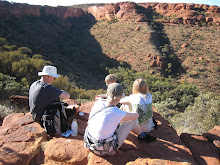


(#1 of two blog entries today)
We slept in again today, but then packed a picnic lunch and drove a circular route around our part of southern Germany today, connecting nearby sights.
The first was the baroque church Wieskirche (top photo). The inside of the church was gorgeous, as you can see, but it was also quiet and peaceful. The church was built in a rural setting and remains so today, unique among tourist sights we normally see. The church is literally surrounded by horses and cows. Aside from being a bit larger than most rural churches, and an unusual oval shape, you would never know the magic that was inside from the view outside.
We drove right past the village of Oberammergau, hosting the every-ten-years passion play that uses half the town as cast members, and fans from around the world. We were not interested in seeing the play (even if tickets were not sold out months ago) and wanted to avoid the chaos in the little town.
But nearby was the village of Ettal, and it’s monastery. We visited the large, circular church there, as well as the grounds and a bit of the village.
Then we went down the road to Linderhof Palace to see “mad” King Ludwig’s primary home before he moved (briefly) to Neuschwanstein. Ludwig was obsessed with the French sun king, Louis XIV and dedicated the palace to him, with decorations, statues, and even his own little (and quite beautiful) hall of mirrors, like Versailles. Ludwig was a recluse. He had almost no visitors. He dined alone, and even had his table set with food and raised up from the kitchen below to his dining room so that he could avoid the interaction with his servants. Despite all this, the palace is relatively modest in size, and quite beautiful inside, although overly ornate. The grounds are quite extensive and include the typical fountains (middle family photo) plus gazebos, a Chinese tea house, and a man-made cavern complete with lake, boat, stage, lighting and heat for hosting Wagnerian operas for the king as the lone audience member!
Our final stop was just across the border in Austria, at the 300-700 year-old Ehrenberg Fortress ruins. This military stronghold guarded the mountain pass below (bottom photo). This visit provided a stark contrast between the idealized visions of castles that filled king Ludwig’s imagination, and the common reality of hard medieval life left in ruin. Like many of our visits so far, this one required a tremendous amount of uphill walking to get to. It is exhausting, and makes us feel a lot better about our calorie intake…


No comments:
Post a Comment